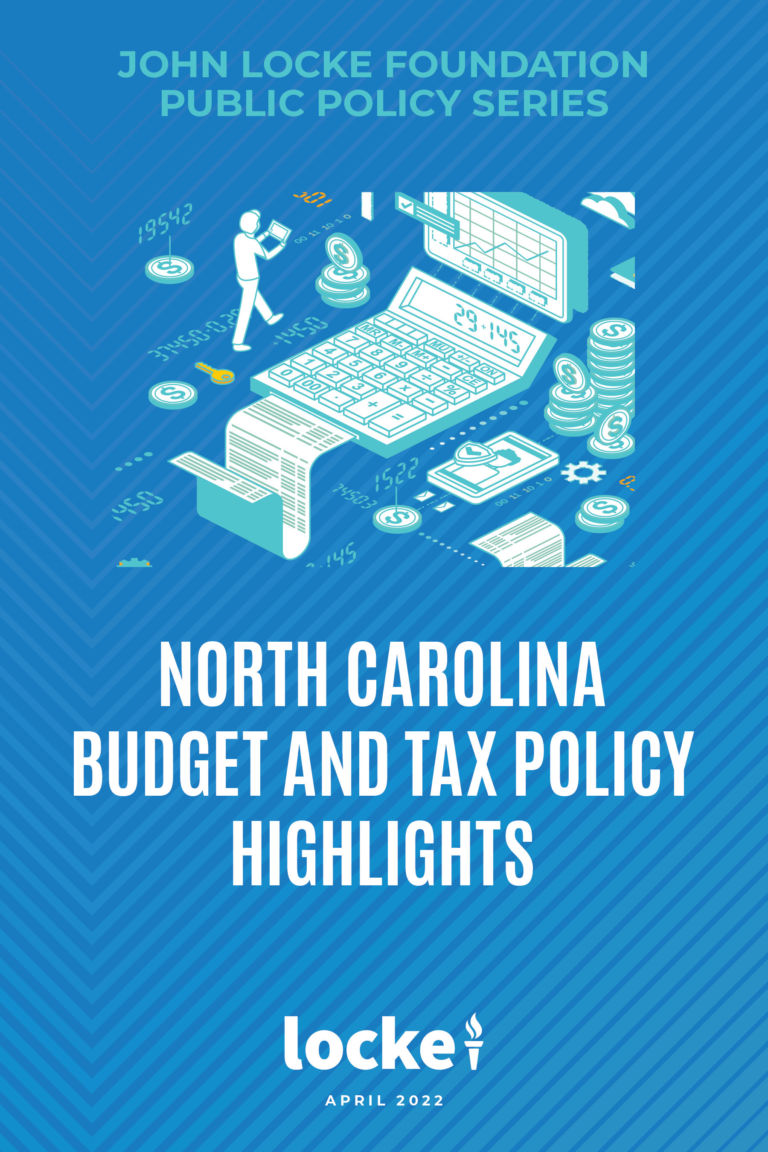The purpose of the North Carolina Budget & Tax Highlights is to equip the legislator, as well as the layman, with updated data to better understand state fiscal policy issues and trends in North Carolina.
Toward this end, this guide features three sections, highlighting taxes, the state budget, and state debt and unfunded liabilities. This guide is chock full of useful data, informative historic trends, and answers to questions important to North Carolina fiscal policy.
At $26 billion a year, the stakes for state budget and tax policy don’t get much higher. Consider, for example, that over the past two decades:
➤ General Fund appropriations have increased by 80 percent
➤ Tax revenues have nearly doubled
➤ Federal funds as a share of the state budget increased 138 percent
Even so, the past decade has seen a dramatic slowdown in General Fund spending thanks to fiscally conservative leadership.
As for taxes, as a share of personal income, personal income taxes had been much higher in North Carolina than in the rest of the Southeast leading up to the 2013 tax cuts. North Carolina for decades had been a high tax state in a generally low-tax region. And it was the high tax rates that fueled the massive spending increases, reinforcing a vicious cycle of “spend and tax.”
By keeping General Fund appropriations in line with population growth and inflation since 2011, the General Assembly was able to build on the 2013 reforms, passing additional tax reform in 2021 that reduced income taxes on business and personal income in particular.
Finally, let’s look at how state debt has changed over the years. As of June 30, 2021, North Carolina’s total net indebtedness was $8.39 billion. In the decade from 2001 to 2011, annual debt service payments on the debt nearly tripled. Fortunately, conservative leadership reversed the state debt trend since assuming power in 2010. Over the past decade, the state has retired approximately $4.6 billion, or 73%, of its outstanding debt.



